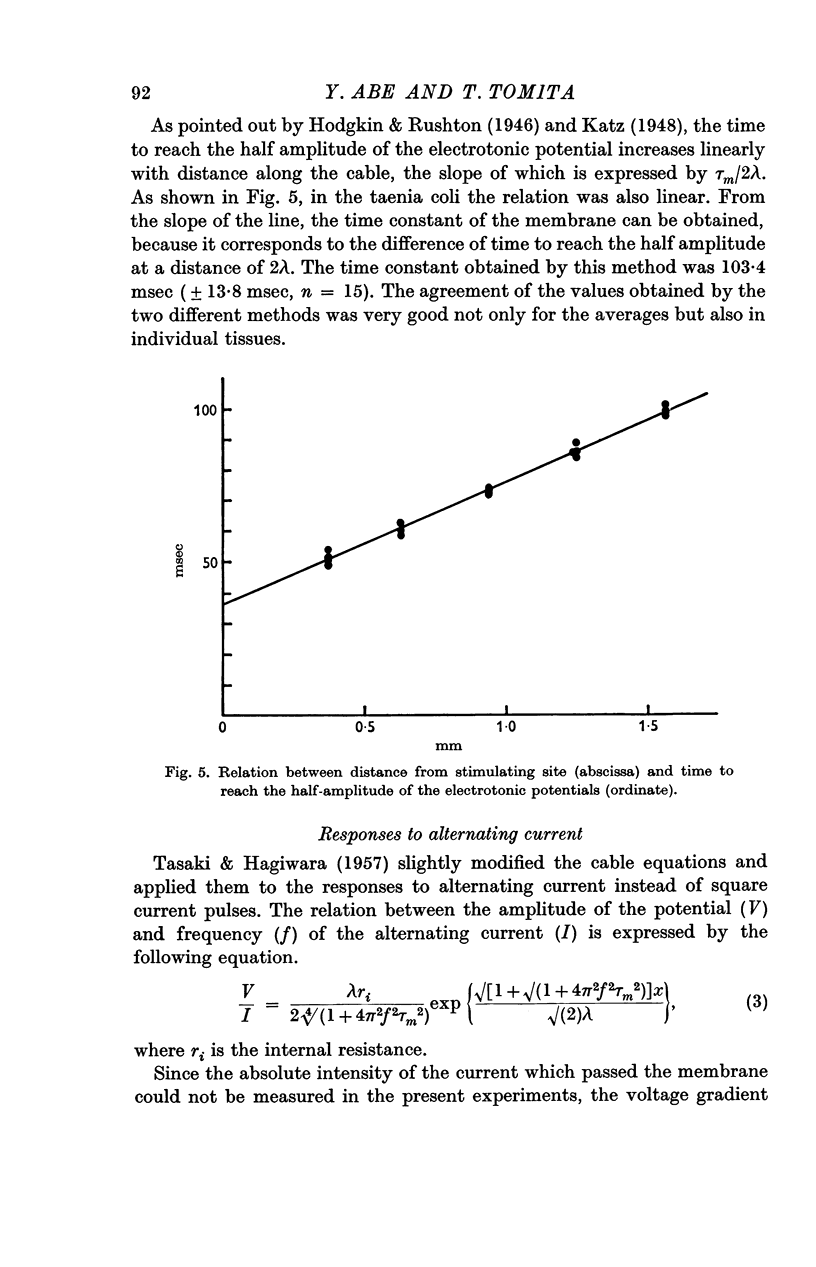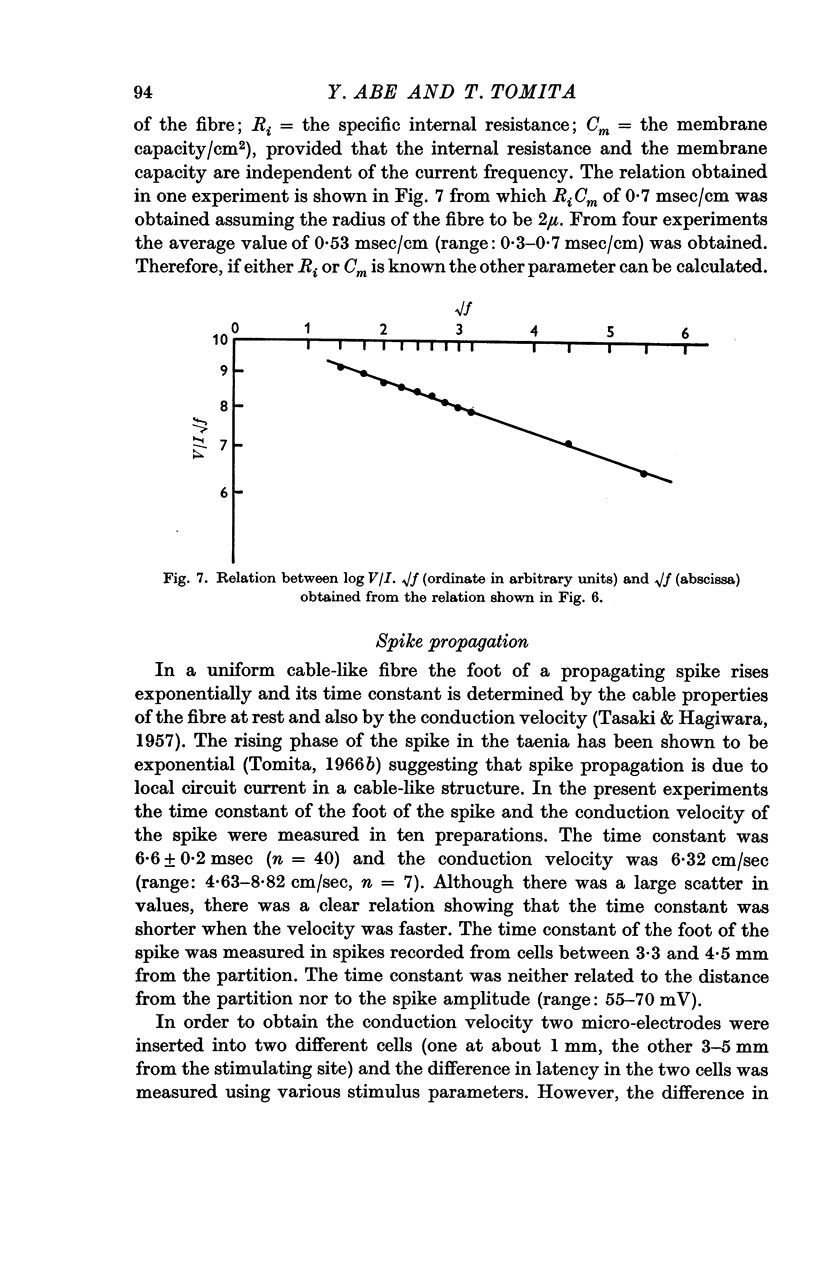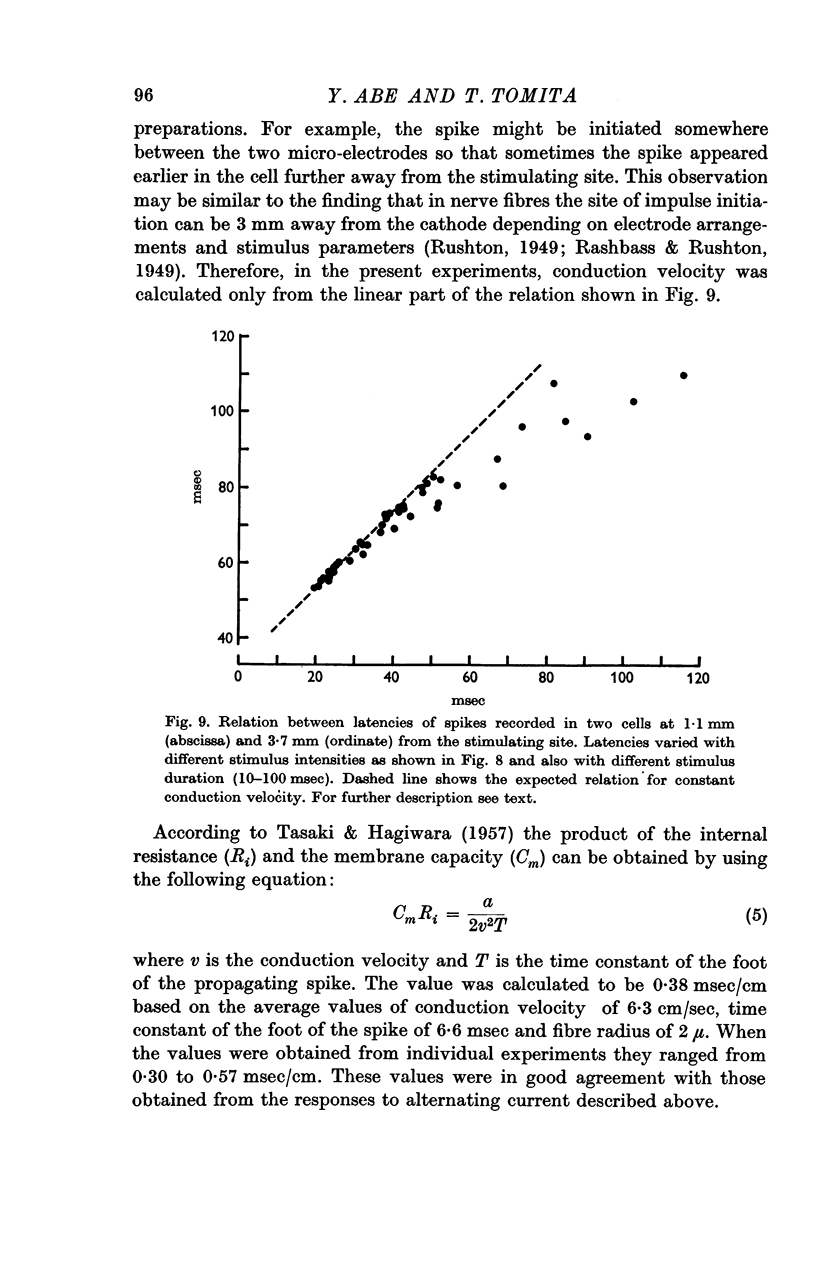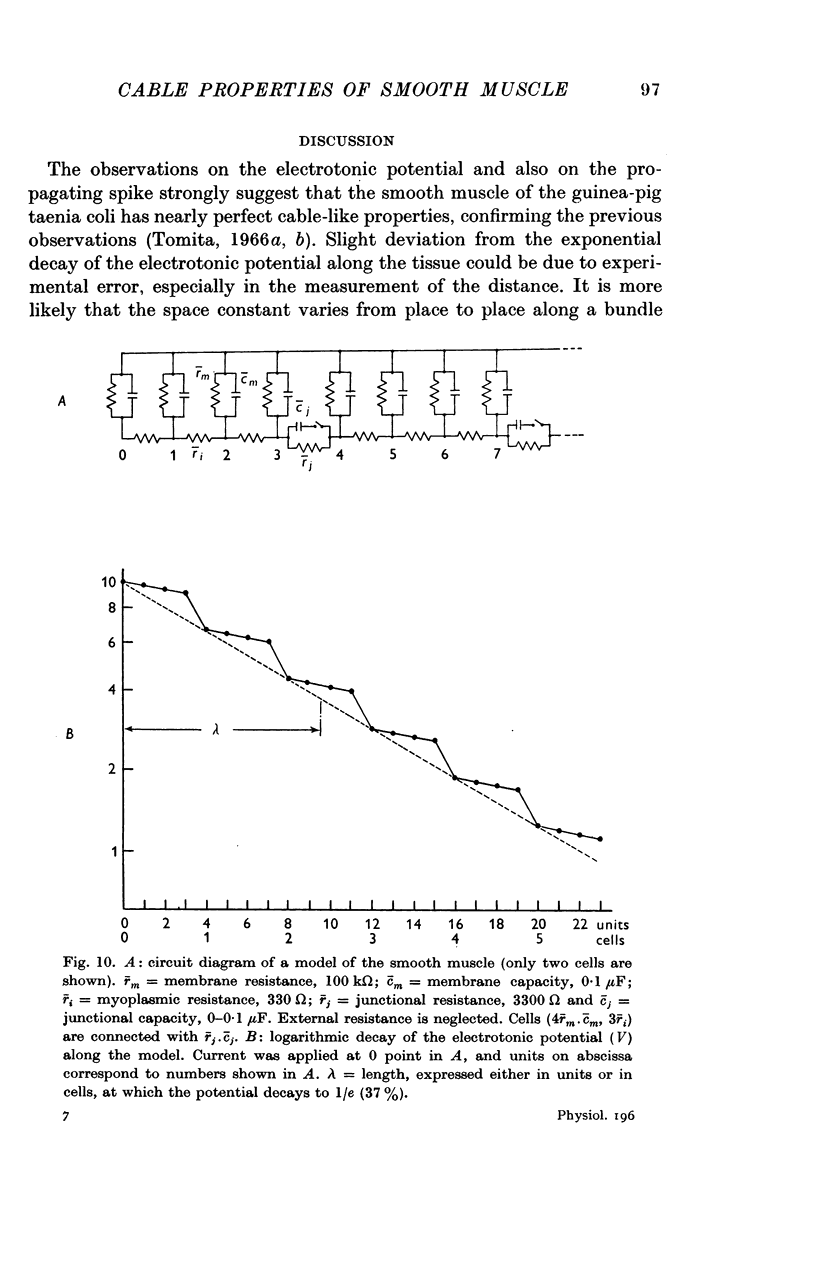Abstract
1. The cable properties of smooth muscle of guinea-pig taenia coli were studied by intracellular recording of electrotonic potentials produced by square current pulses and alternating current applied with external electrodes.
2. An electrical model of the smooth muscle was constructed to test how the junctional resistance between cells affected the cable properties. The model consisted of a series of short cables (representing cells) which were connected by junctional resistances.
3. It was concluded, from the experiments on the living tissue and on the model, that the electrotonic potential in smooth muscle can be expressed by the ordinary cable equation used for nerve and skeletal muscle fibres, even though the junctional resistance is of the same order of magnitude as that of the myoplasmic resistance.
4. The cable equation was used to analyse the membrane parameters from the electrotonic potential, from the time course of the foot of the spike and from the conduction velocity. The analysis indicates that the smooth muscle has a membrane capacity of 2-3 μF/cm2 and a membrane resistance of 30-50 kΩ cm2.
Full text
PDF













Selected References
These references are in PubMed. This may not be the complete list of references from this article.
- BULBRING E. Membrane potentials of smooth muscle fibres of the taenia coli of the guinea-pig. J Physiol. 1954 Aug 27;125(2):302–315. doi: 10.1113/jphysiol.1954.sp005159. [DOI] [PMC free article] [PubMed] [Google Scholar]
- KURIYAMA H. The influence of potassium, sodium and chloride on the membrane potential of the smooth muscle of taenia coli. J Physiol. 1963 Apr;166:15–28. doi: 10.1113/jphysiol.1963.sp007088. [DOI] [PMC free article] [PubMed] [Google Scholar]
- RASHBASS C., RUSHTON W. A. H. Space distribution of excitability in the frog's sciatic nerve stimulated by polar electrodes. J Physiol. 1949 Sep;109(3-4):343–353. doi: 10.1113/jphysiol.1949.sp004397. [DOI] [PMC free article] [PubMed] [Google Scholar]
- RUSHTON W. A. H. The site of excitation in the nerve trunk of the frog. J Physiol. 1949 Sep;109(3-4):314–326. doi: 10.1113/jphysiol.1949.sp004395. [DOI] [PMC free article] [PubMed] [Google Scholar]
- TASAKI I., HAGIWARA S. Capacity of muscle fiber membrane. Am J Physiol. 1957 Mar;188(3):423–429. doi: 10.1152/ajplegacy.1957.188.3.423. [DOI] [PubMed] [Google Scholar]
- Tomita T. Current spread in the smooth muscle of the guinea-pig vas deferens. J Physiol. 1967 Mar;189(1):163–176. doi: 10.1113/jphysiol.1967.sp008161. [DOI] [PMC free article] [PubMed] [Google Scholar]
- Tomita T. Electrical responses of smooth muscle to external stimulation in hypertonic solution. J Physiol. 1966 Mar;183(2):450–468. doi: 10.1113/jphysiol.1966.sp007876. [DOI] [PMC free article] [PubMed] [Google Scholar]
- Tomita T. Membrane capacity and resistance of mammalian smooth muscle. J Theor Biol. 1966 Nov;12(2):216–227. doi: 10.1016/0022-5193(66)90114-7. [DOI] [PubMed] [Google Scholar]
- Tomita T. Spike propagation in the smooth muscle of the guinea-pig taenia coli. J Physiol. 1967 Aug;191(3):517–527. doi: 10.1113/jphysiol.1967.sp008265. [DOI] [PMC free article] [PubMed] [Google Scholar]


